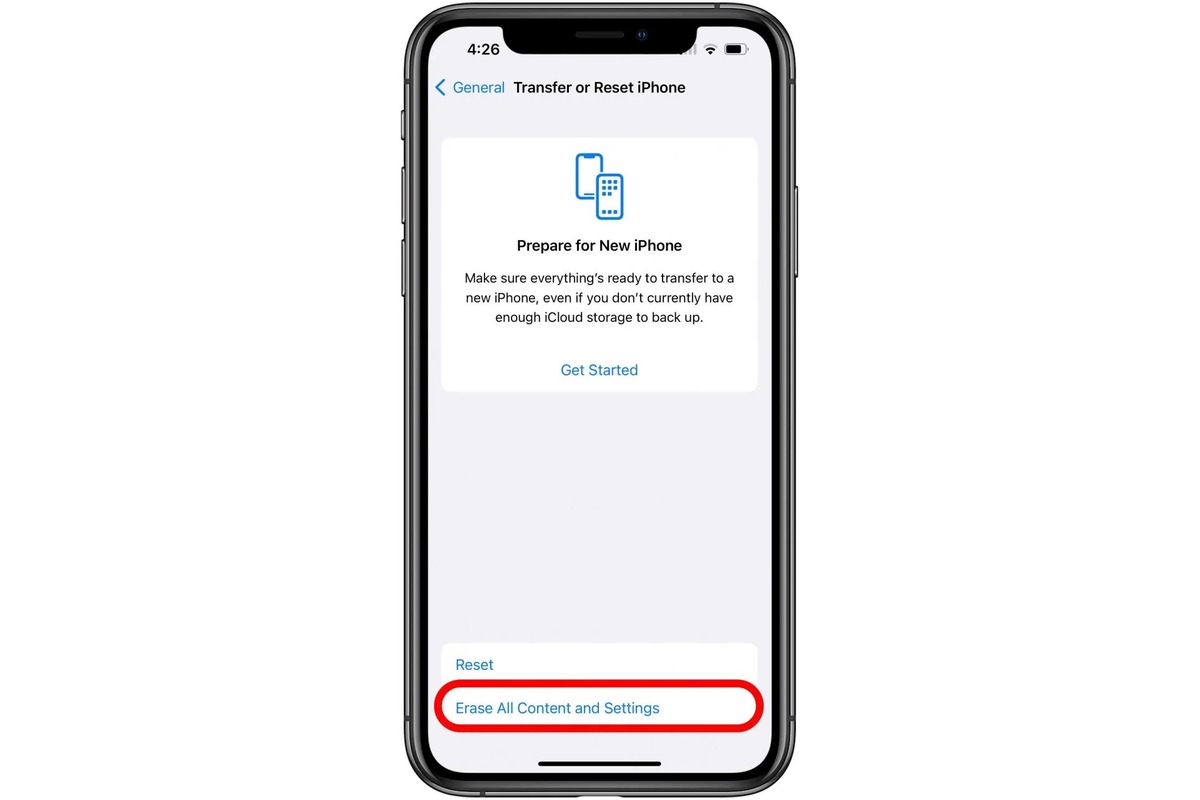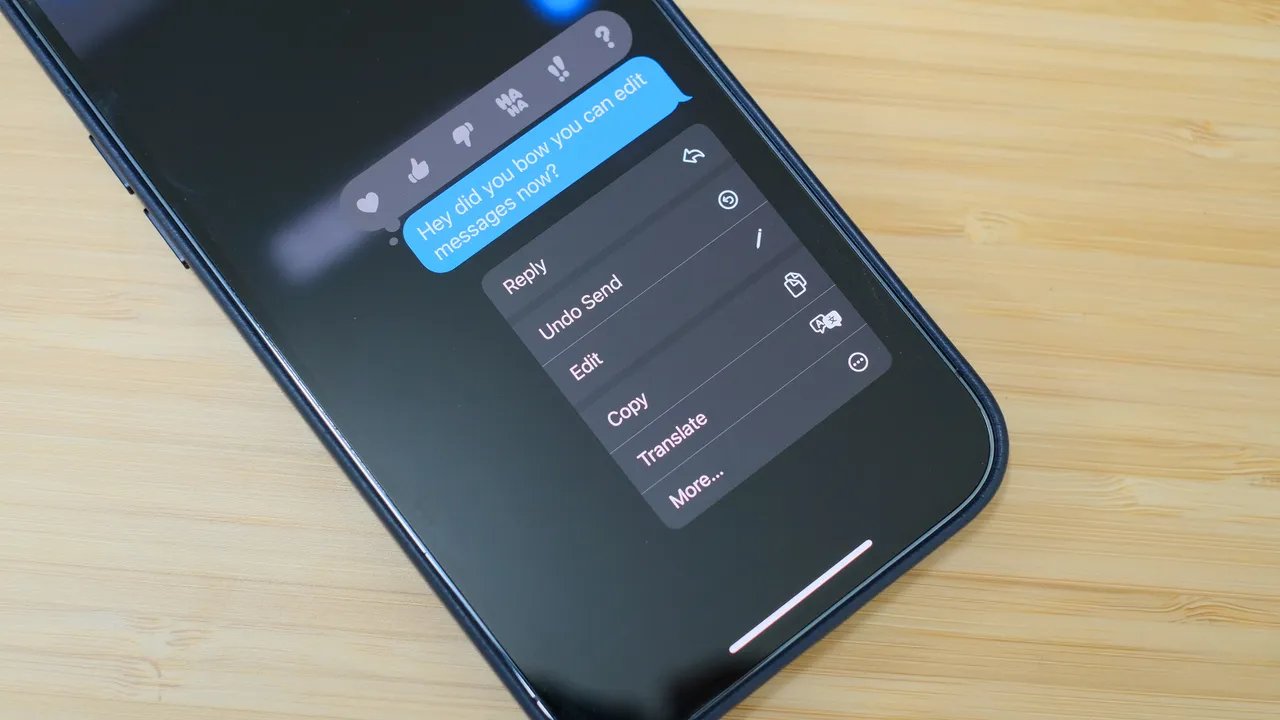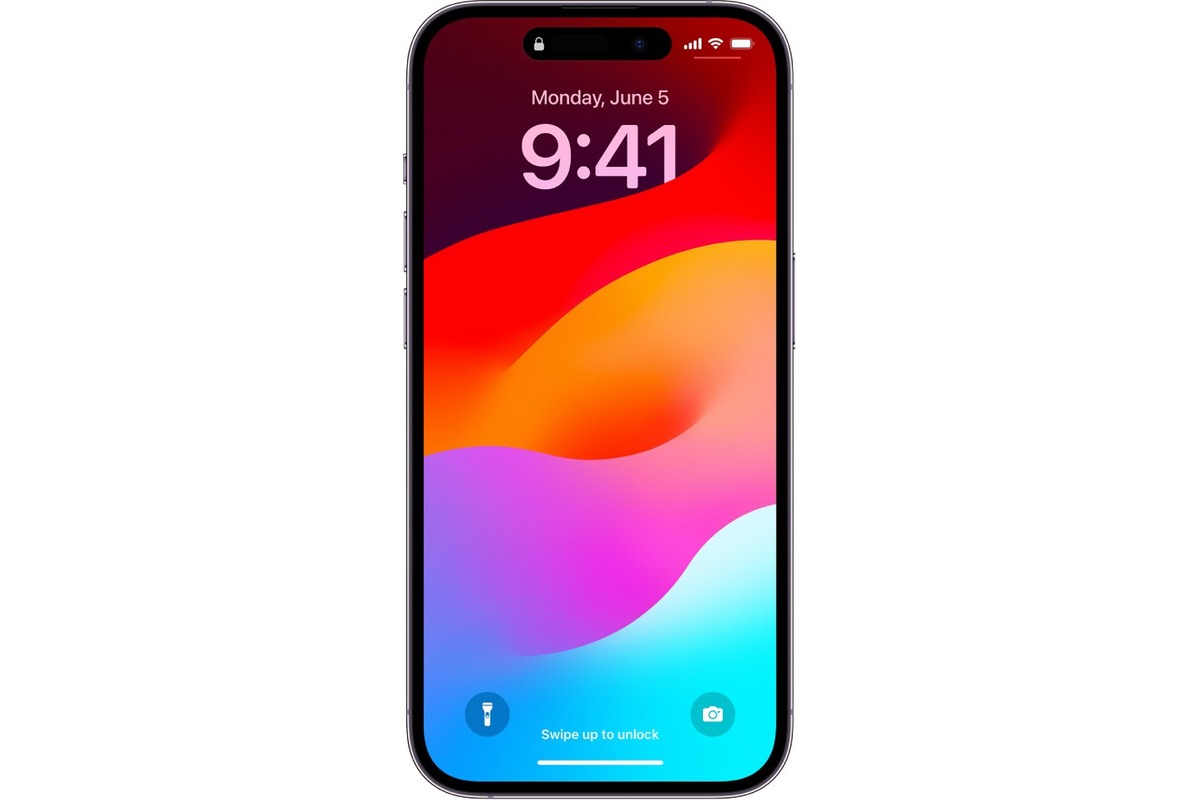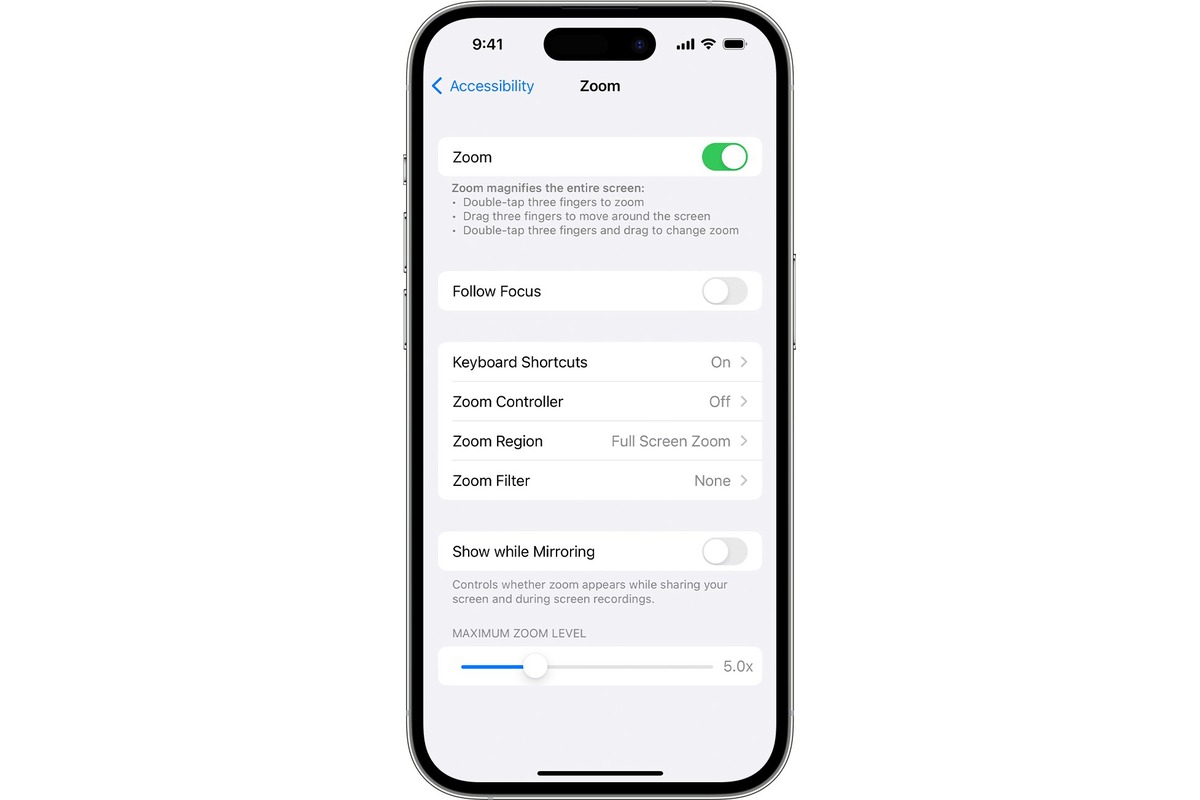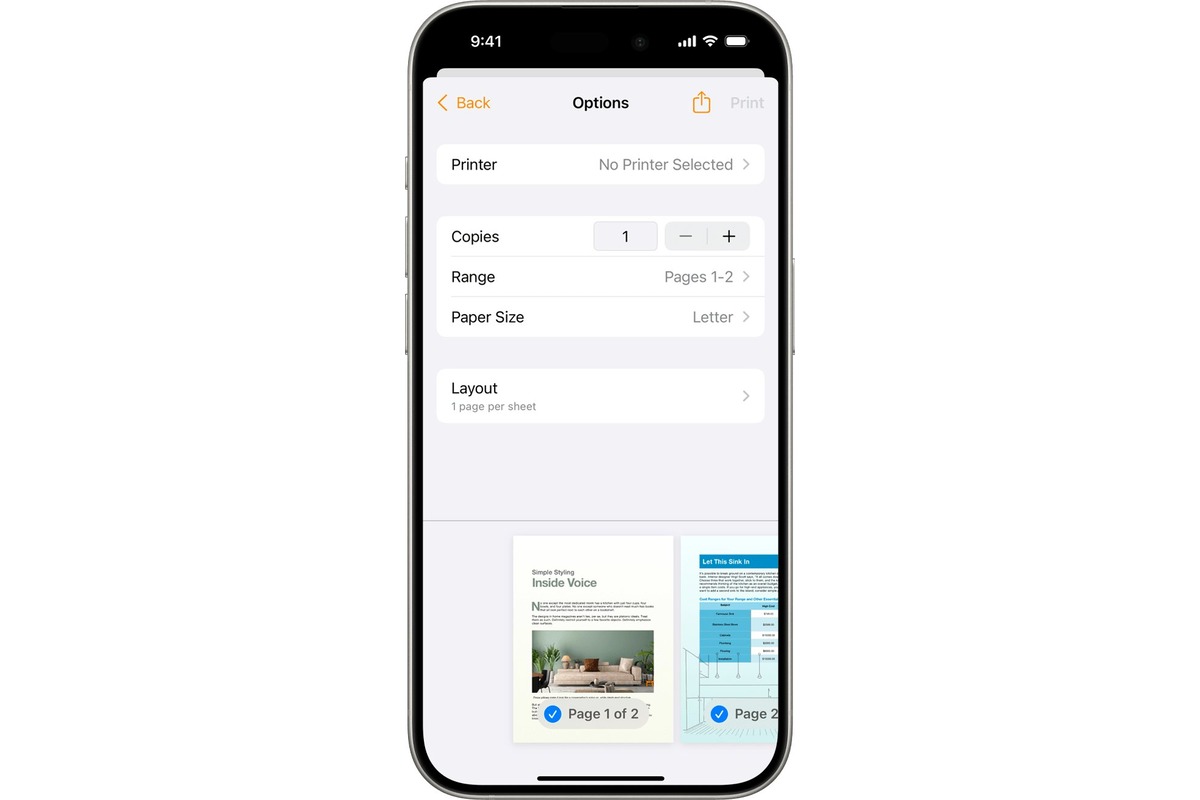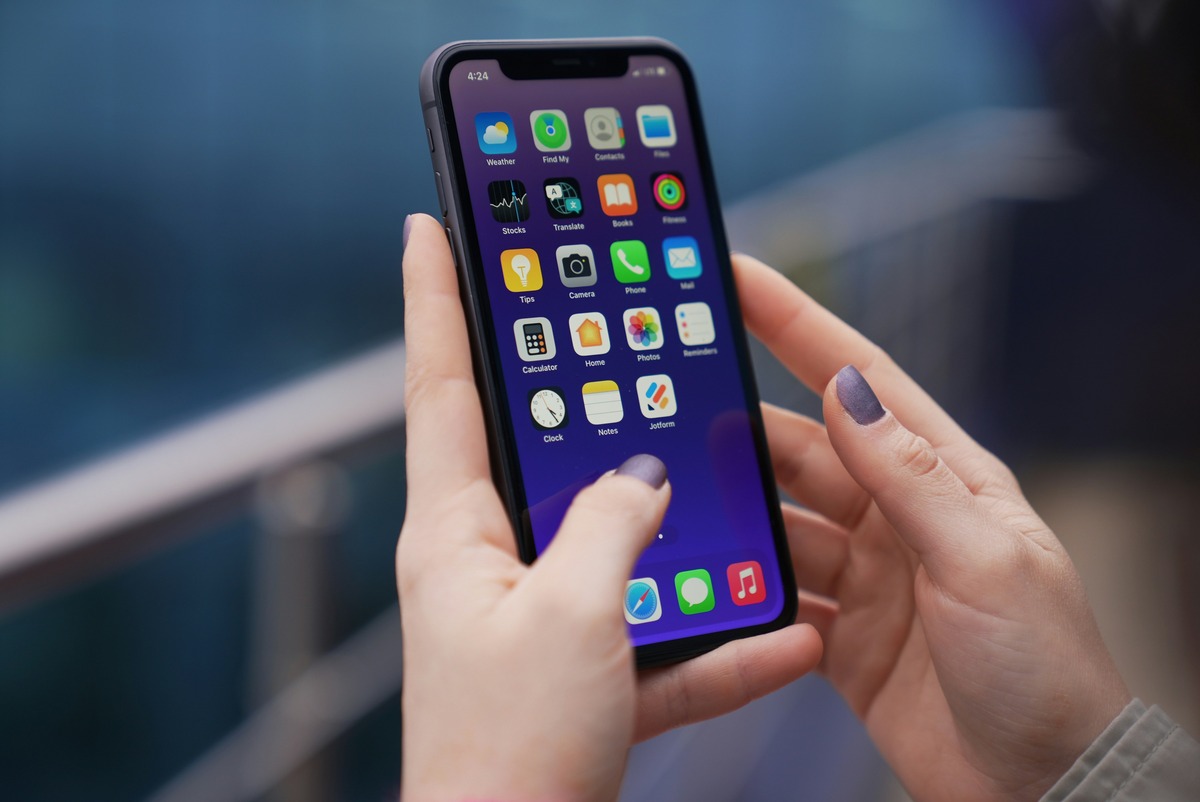Home>Technology and Computers>How To Stop Spam Emails On IPhone
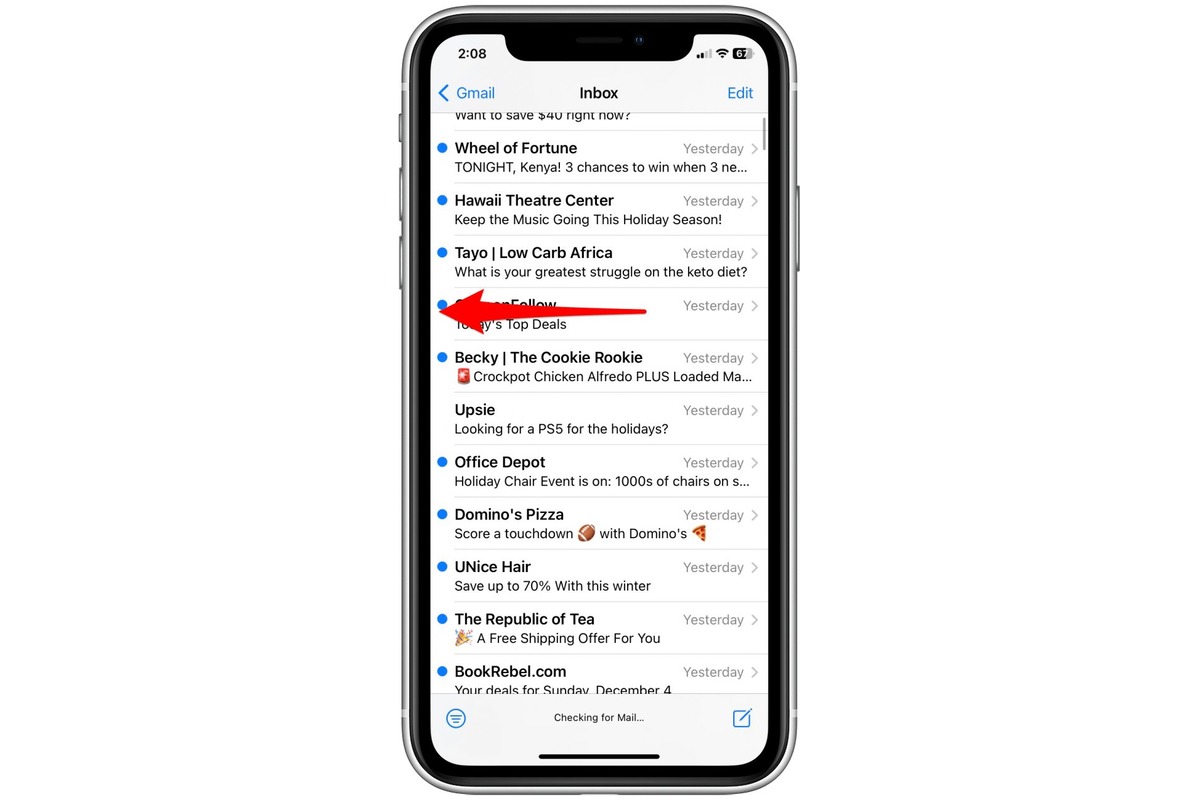

Technology and Computers
How To Stop Spam Emails On IPhone
Published: March 5, 2024
Learn effective strategies to prevent spam emails on your iPhone. Get expert tips and tricks for enhancing your technology and computer security. Protect your device and personal information today!
(Many of the links in this article redirect to a specific reviewed product. Your purchase of these products through affiliate links helps to generate commission for Noodls.com, at no extra cost. Learn more)
Table of Contents
Introduction
Are you tired of sifting through a barrage of spam emails on your iPhone? You're not alone. Spam emails can be a major nuisance, cluttering your inbox and making it challenging to find important messages. Fortunately, there are several effective strategies to combat this digital deluge and restore order to your email experience. In this article, we'll explore practical steps to help you stop spam emails on your iPhone, allowing you to reclaim control of your inbox and focus on the messages that matter most.
Spam emails, also known as junk emails, are unsolicited messages that inundate your inbox with advertisements, phishing attempts, and other unwanted content. These emails not only consume valuable storage space but also pose security risks, as they may contain malicious links or attachments. By implementing the techniques outlined in this guide, you can minimize the impact of spam emails and safeguard your iPhone against potential threats.
Now, let's delve into the actionable steps that will empower you to combat spam emails effectively on your iPhone. Whether you're a seasoned iPhone user or new to the platform, these strategies are designed to be accessible and straightforward, enabling you to take control of your email environment with confidence. Let's embark on this journey to declutter your inbox and fortify your iPhone against the relentless tide of spam emails.
Read more: How To Stop Being A Narcissist
Step 1: Update Your iPhone's Software
Keeping your iPhone's software up to date is a crucial first step in fortifying its defenses against spam emails. Apple regularly releases software updates that include security enhancements and bug fixes, which can help bolster your device's resilience against spam and other digital threats.
When you update your iPhone's software, you ensure that it is equipped with the latest security patches and protocols, which are essential for safeguarding your device against potential vulnerabilities exploited by spammers. To check for available updates, navigate to "Settings" on your iPhone, tap "General," and then select "Software Update." If an update is available, follow the on-screen prompts to download and install it.
By maintaining up-to-date software, you not only benefit from improved security measures but also gain access to the latest features and performance optimizations. This proactive approach to software maintenance is a fundamental aspect of preserving the integrity of your iPhone and mitigating the impact of spam emails.
In addition to enhancing security, software updates often include refinements to the Mail app, which may introduce improved spam filtering capabilities and other email management features. These enhancements can contribute to a more robust defense against spam, making it easier to identify and manage unwanted emails effectively.
Furthermore, staying current with software updates demonstrates a commitment to proactive device management, reflecting a responsible approach to digital security. By prioritizing the regular maintenance of your iPhone's software, you establish a strong foundation for safeguarding your device and maintaining a secure email environment.
In summary, updating your iPhone's software is a pivotal step in fortifying its defenses against spam emails. By staying current with software updates, you can benefit from enhanced security measures, improved email management features, and a proactive approach to device maintenance. This proactive stance not only mitigates the impact of spam emails but also contributes to a more secure and resilient iPhone experience.
Step 2: Use the Built-in Spam Filter
The built-in spam filter in the Mail app on your iPhone is a powerful tool for identifying and managing spam emails. Leveraging advanced algorithms and pattern recognition, this feature automatically flags suspicious messages and diverts them to the spam folder, keeping your inbox free from clutter and potential security risks.
To make the most of the built-in spam filter, it's essential to familiarize yourself with its functionality and customization options. Within the Mail app, you can access the spam filter settings by navigating to the "Mailboxes" section and selecting the "Spam" folder. Here, you can review the messages identified as spam and fine-tune the filter's sensitivity to better align with your preferences.
By regularly reviewing the contents of the spam folder, you can help train the filter to recognize patterns specific to your email habits, further enhancing its accuracy in identifying spam. Additionally, marking false positives or legitimate emails incorrectly flagged as spam can refine the filter's performance over time, reducing the likelihood of important messages being misclassified.
Furthermore, the built-in spam filter can be augmented with custom rules and filters to bolster its effectiveness. By creating rules that target specific senders, keywords, or domains commonly associated with spam, you can proactively intercept unwanted emails before they reach your inbox. This level of customization empowers you to tailor the filter to your unique preferences and preemptively mitigate the impact of spam emails.
In addition to its automated filtering capabilities, the built-in spam filter benefits from seamless integration with iCloud and other email providers, enabling a synchronized approach to spam management across multiple devices. This synchronization ensures that the filter's learnings and adjustments are propagated consistently, optimizing its performance and maintaining a unified spam management experience.
By leveraging the built-in spam filter on your iPhone, you can proactively combat spam emails and streamline your email management process. This feature serves as a proactive defense mechanism, empowering you to maintain a clutter-free inbox and mitigate the potential security risks associated with spam. With its customizable settings and seamless synchronization, the built-in spam filter is a valuable asset in fortifying your iPhone against the deluge of unwanted emails.
In summary, the built-in spam filter in the Mail app equips you with the tools to identify, manage, and mitigate the impact of spam emails effectively. By leveraging its automated filtering capabilities, customization options, and synchronization features, you can reclaim control of your inbox and foster a more secure and streamlined email experience on your iPhone.
Step 3: Unsubscribe from Unwanted Emails
Unwanted emails, often originating from mailing lists and promotional subscriptions, can contribute to the inundation of spam in your inbox. One effective strategy to reduce the influx of such emails is to proactively unsubscribe from them. By taking this proactive approach, you can declutter your inbox and minimize the volume of unwanted messages, thereby enhancing your overall email management experience.
When confronted with unwanted emails, it's important to assess their origins and relevance to your interests. Many promotional emails and newsletters provide an option to unsubscribe, typically located at the bottom of the message. This unsubscribe link is often accompanied by a brief statement such as "Unsubscribe" or "Manage Preferences," providing a straightforward means to opt out of future communications from the sender.
Upon clicking the unsubscribe link, you may be directed to a webpage where you can confirm your decision to unsubscribe. It's essential to follow through with this process to ensure that your request is successfully processed. By unsubscribing from unwanted emails, you communicate your preference to discontinue receiving further communications from the sender, thereby reducing the likelihood of future messages cluttering your inbox.
In some cases, you may encounter challenges when attempting to unsubscribe from certain mailing lists or promotional subscriptions. If the unsubscribe process appears convoluted or if you continue to receive unwanted emails after opting out, it may be beneficial to mark such messages as spam within your email client. This action not only helps declutter your inbox but also signals to your email provider that the sender's communications are unwanted, potentially prompting additional measures to mitigate their impact.
Furthermore, exercising caution when sharing your email address online can help minimize the influx of unwanted emails. When prompted to provide your email address for various purposes, consider the necessity of doing so and the potential implications for your inbox. By being selective in sharing your email address and opting out of unnecessary subscriptions, you can proactively reduce the volume of unwanted emails reaching your inbox.
In summary, unsubscribing from unwanted emails is a proactive and effective strategy for decluttering your inbox and minimizing the impact of spam on your iPhone. By leveraging the unsubscribe options provided in promotional emails and newsletters, and exercising caution when sharing your email address, you can take control of your email environment and foster a more streamlined and manageable inbox experience.
Step 4: Mark Emails as Spam
One of the most direct and immediate actions you can take to combat spam emails on your iPhone is to mark them as spam within your email client. By flagging suspicious or unwanted messages as spam, you not only declutter your inbox but also contribute to the refinement of your email provider's spam filtering algorithms, enhancing the overall effectiveness of spam mitigation efforts.
When you encounter an email that you believe to be spam, whether it contains unsolicited advertisements, suspicious links, or irrelevant content, it's essential to promptly mark it as spam. This action signals to your email provider that the message is unwanted and potentially malicious, prompting the system to take appropriate measures to mitigate its impact.
In the Mail app on your iPhone, marking an email as spam is a straightforward process. Upon identifying a message as spam, you can typically access the option to mark it as such by selecting the message and navigating to the appropriate menu or toolbar. This action effectively communicates your intent to classify the message as spam, triggering the email provider's spam filtering mechanisms to intercept similar messages in the future.
Furthermore, marking emails as spam contributes to the ongoing refinement of the spam filter's capabilities. As you flag unwanted messages, the filter learns from these interactions, enhancing its ability to identify and divert similar messages away from your inbox. This iterative process of feedback and adaptation strengthens the filter's performance, reducing the likelihood of future spam emails infiltrating your inbox.
In addition to marking individual emails as spam, you can also leverage the bulk spam reporting feature if your email client supports this functionality. This allows you to select multiple messages and designate them collectively as spam, streamlining the process of identifying and addressing a cluster of unwanted emails in one efficient action.
By actively marking emails as spam, you contribute to a collective effort to combat spam at a systemic level, fostering a more secure and streamlined email experience for all users. This proactive approach not only benefits your individual inbox management but also contributes to the broader ecosystem of email security and spam mitigation.
In summary, marking emails as spam is a direct and impactful strategy for combating unwanted messages on your iPhone. By promptly flagging suspicious emails and contributing to the ongoing refinement of spam filtering mechanisms, you play a vital role in fortifying your email environment against the relentless tide of spam.
Read more: How To Cook Spam
Step 5: Use Third-Party Spam Filtering Apps
In addition to the built-in spam filtering capabilities of the Mail app on your iPhone, leveraging third-party spam filtering apps can provide an added layer of protection against unwanted emails. These specialized apps offer advanced features and customization options designed to enhance the accuracy and effectiveness of spam detection, empowering you to fortify your email environment with comprehensive defense mechanisms.
Third-party spam filtering apps are equipped with sophisticated algorithms and machine learning capabilities that continuously analyze incoming emails to identify patterns indicative of spam. By harnessing the power of artificial intelligence and data-driven insights, these apps can discern subtle nuances and emerging trends associated with spam, enabling them to adapt and evolve in response to evolving tactics employed by spammers.
Furthermore, many third-party spam filtering apps offer customizable settings that allow you to fine-tune the filtering parameters to align with your specific preferences and tolerance for false positives. This level of customization empowers you to tailor the spam filtering process to suit your individual needs, striking a balance between stringent spam detection and the preservation of legitimate messages that may otherwise be erroneously flagged.
Moreover, third-party spam filtering apps often integrate seamlessly with popular email platforms, including iCloud, Gmail, and Outlook, ensuring a cohesive and synchronized spam management experience across multiple devices. This synchronization facilitates a unified approach to spam mitigation, enabling consistent application of filtering rules and preferences regardless of the device or email client being used.
By incorporating third-party spam filtering apps into your email management strategy, you can augment the built-in capabilities of your iPhone's Mail app with advanced, specialized tools dedicated to combating spam. This proactive approach not only enhances the accuracy and efficiency of spam detection but also contributes to a more streamlined and secure email experience, free from the disruptions and potential security risks posed by spam emails.
In summary, leveraging third-party spam filtering apps empowers you to fortify your iPhone against the persistent onslaught of spam emails, providing advanced features, customization options, and seamless integration with popular email platforms. By embracing these specialized tools, you can proactively safeguard your email environment and reclaim control of your inbox with confidence.
Conclusion
In conclusion, the relentless influx of spam emails can disrupt our digital lives and compromise the security of our devices. However, by implementing the strategies outlined in this guide, you can effectively combat spam emails on your iPhone and reclaim control of your inbox. From leveraging the built-in spam filter and marking emails as spam to utilizing third-party spam filtering apps, these proactive measures empower you to fortify your email environment and mitigate the impact of unwanted messages.
By updating your iPhone's software, you not only enhance its security measures but also gain access to the latest features and performance optimizations. This proactive approach to software maintenance establishes a strong foundation for safeguarding your device and maintaining a secure email environment.
The built-in spam filter in the Mail app serves as a powerful tool for identifying and managing spam emails. By familiarizing yourself with its functionality and customization options, you can streamline your email management process and minimize the impact of spam on your inbox.
Unsubscribing from unwanted emails is a proactive and effective strategy for decluttering your inbox and minimizing the impact of spam on your iPhone. By leveraging the unsubscribe options provided in promotional emails and newsletters, and exercising caution when sharing your email address, you can take control of your email environment and foster a more streamlined and manageable inbox experience.
Marking emails as spam is a direct and impactful strategy for combating unwanted messages on your iPhone. By promptly flagging suspicious emails and contributing to the ongoing refinement of spam filtering mechanisms, you play a vital role in fortifying your email environment against the relentless tide of spam.
In addition to the built-in features, third-party spam filtering apps offer advanced capabilities and customization options designed to enhance the accuracy and effectiveness of spam detection. By incorporating these specialized tools into your email management strategy, you can augment the built-in capabilities of your iPhone's Mail app with advanced, specialized tools dedicated to combating spam.
In essence, by combining these strategies and approaches, you can create a robust defense against spam emails on your iPhone, fostering a more secure, streamlined, and enjoyable email experience. Embracing these proactive measures not only empowers you to reclaim control of your inbox but also contributes to the broader ecosystem of email security and spam mitigation. With a fortified email environment, you can focus on the messages that matter most and navigate your digital world with confidence and peace of mind.

